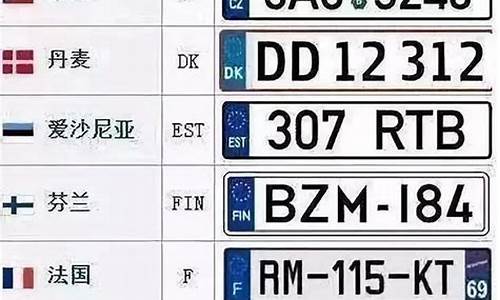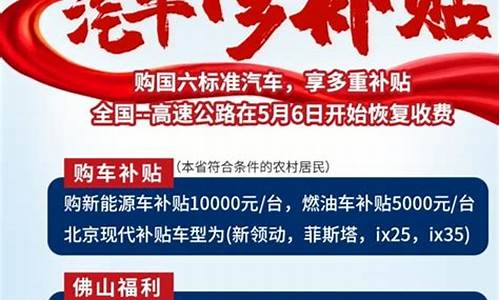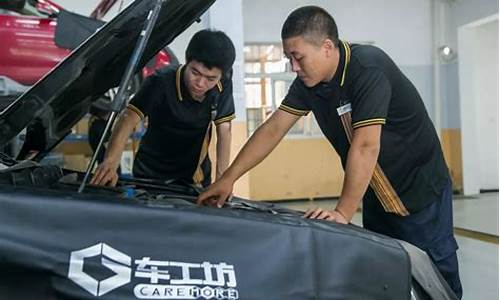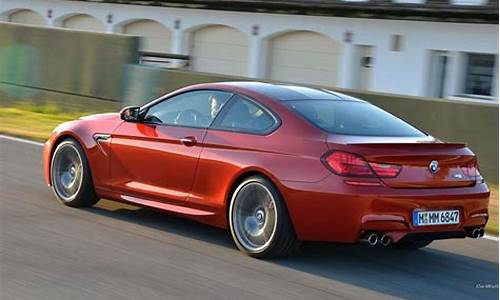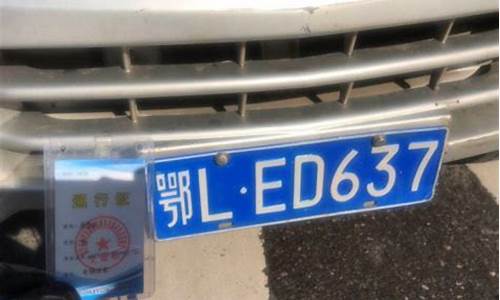_aria math是什么意思

一、 Vue父子 组件之间传值
vue使用中,经常会用到组件,好处是:
1、如果有一个功能很多地方都会用到,写成一个组件就不用重复写这个功能了;
2、页面内容会简洁一些;方便管控;
子组件的传值是通过props来传递数据,$emit来触发;
下面是一个简单的子组件props传值:
父组件的部分:
首先引入组件,在组件上绑定你要传给组件的值;
然后,在组件里通过props来接收你从父页面传过来的值;so,父组件把值传给子组件就完成了;
下面是一个子组件在把值传给父组件的例子:
父组件部分:
子组件部分:
先是<nobr aria-hidden="true" style="box-sizing: border-box; outline: 0px; margin: 0px; padding: 0px; transition: none 0s ease 0s; border: 0px; max-width: none; max-height: none; min-width: 0px; min-height: 0px; vertical-align: 0px; line-height: normal; text-decoration: none; white-space: nowrap !important; font-family: KaTeX_Main, "Times New Roman", serif; overflow-wrap: break-word;">change监听input值的变化,通过</nobr><math xmlns="://.w3.org/1998/Math/MathML"><semantics><annotation encoding="lication/x-tex">change监听input值的变化,通过</annotation></semantics></math>change监听input值的变化,通过emit来连接父组件和子组件之间的;transferUser是在父组件连接的名称,后面跟上返回的数据;然后在父组件通过getUser获取数据,就这样子传父的过程就完成了…
二、 兄弟组件之间的传值
兄弟组件之间的传值和父子组件之间的传值非常相似,都是通过$emit;
原理是:vue一个新的实例,类似于一个站,连接着两个组件,也就是一个中央总线;
下面是一个bus实例:
1、创建一个firstChild组件,引入bus,接着一个按绑定数据传输:
我们通过一个 emit实例方法触发当前实例(这里的当前实例就是bus)上的,附加参数都会传给回调。
下面是另一个组件,引入bus实例,通过一个p标签接收数据:
这个组件的mounted里,我们监听了userDefinedEvent,并把传递过来的通过 emit)的额外参数。
接下来就是展示真正的效果的时候了:
点击之后:
总结:
1,首先创建一个总线,例如bus,作为一个通讯的桥梁;
2,在需要传值的组件中,通过<nobr aria-hidden="true" style="box-sizing: border-box; outline: 0px; margin: 0px; padding: 0px; transition: none 0s ease 0s; border: 0px; max-width: none; max-height: none; min-width: 0px; min-height: 0px; vertical-align: 0px; line-height: normal; text-decoration: none; white-space: nowrap !important; font-family: KaTeX_Main, "Times New Roman", serif; overflow-wrap: break-word;">emit触发一个自定义,并传递参数;3,在接收数据的组件中,通过</nobr><math xmlns="://.w3.org/1998/Math/MathML"><semantics><annotation encoding="lication/x-tex">emit触发一个自定义,并传递参数;3,在接收数据的组件中,通过</annotation></semantics></math>emit触发一个自定义,并传递参数;3,在接收数据的组件中,通过on监听自定义,并处理传递过来的参数;
另外:
1、兄弟组件之间与父子组件之间的数据交互,两者相比较,兄弟组件之间的通信其实和子组件向父组件传值有些类似,其实他们的通信原理都是相同的,例如子向父传值也是<nobr aria-hidden="true" style="box-sizing: border-box; outline: 0px; margin: 0px; padding: 0px; transition: none 0s ease 0s; border: 0px; max-width: none; max-height: none; min-width: 0px; min-height: 0px; vertical-align: 0px; line-height: normal; text-decoration: none; white-space: nowrap !important; font-family: KaTeX_Main, "Times New Roman", serif; overflow-wrap: break-word;">emit和</nobr><math xmlns="://.w3.org/1998/Math/MathML"><semantics><annotation encoding="lication/x-tex">emit和</annotation></semantics></math>emit和on的形式,只是没有eventBus,但若我们仔细想想,此时父组件其实就充当了bus这个总线的角色。
2、这种用一个Vue实例来作为中央总线来管理组件通信的方法只适用于通信需求简单一点的项目,对于更复杂的情况,Vue也有提供更复杂的状态管理模式Vuex来进行处理。
这是一片写的不错的
Effect of fiber architecture on flexural characteristics and fracture of fiber-reinforc
Vistasp M. Karbharia, Corresponding Author Contact Information, E-mail The Corresponding Author and Howard Strasslerb
aMaterials Science & Engineering Program, and Department of Structural Engineering, MC-0085, University of California San Diego, Room 105, Building 409, University Center, La Jolla, CA 92093-0085, USA.
bDepartment of Restorative Dentistry, Dental School, University of Maryland, Baltimore, MD, USA
Received 10 December 2005; revised 25 June 2006; accepted 31 August 2006. Available online 7 November 2006.
Abstract
Objective
The aim of this study was to compare and elucidate the differences in damage mechanisms and response of fiber-reinforced dental resin composites based on three different brandsnext term under flexural loading. The types of reinforcement consisted of a unidirectional E-glass prepreg (Splint-It from Jeneric/Petron Inc.), an ultrahigh molecular weight polyethylene fiber based biaxial braid (Connect, Kerr) and an ultrahigh molecular weight polyethylene fiber based leno-wee (Ribbond).
Methods
Three different commercially ailable fiber reinforcing systems were used to fabricate rectangular bars, with the fiber reinforcement close to the tensile face, which were tested in flexure with an emphasis on studying damage mechanisms and response. Eight specimens (n = 8) of each type were tested. Overall energy capacity as well as flexural strength and modulus were determined and results compared in light of the different abilities of the architectures used.
Results
Under flexural loading unreinforced and unidirectional prepreg reinforced dental composites failed in a brittle previous termfashion,next term whereas the braid and leno-wee reinforced materials underwent significant deformation without rupture. The braid reinforced specimens showed the highest peak load. The addition of the unidirectional to the matrix resulted in an erage strain of 0.06 mm/mm which is 50% greater than the capacity of the unreinforced matrix, whereas the addition of the braid and leno-wee resulted in increases of 119 and 126%, respectively, emphasizing the higher capacity of both the UHM polyethylene fibers and the architectures to hold together without rupture under flexural loading. The addition of the fiber reinforcement substantially increases the level of strain energy in the specimens with the maximum being attained in the braid reinforced specimens with a 433% increase in energy absorption capability above the unreinforced case. The minimum scatter and highest consistency in response is seen in the leno-wee reinforced specimens due to the details of the architecture which restrict fabric shearing and movement during placement.
Significance
It is crucial that the ropriate selection of fiber architectures be made not just from a perspective of highest strength, but overall damage tolerance and energy absorption. Differences in wees and architectures can result in substantially different performance and ropriate selection can mitigate premature and catastrophic failure. The study provides details of materials level response characteristics which are useful in selection of the fiber reinforcement based on specifics of lication.
Keywords: Fiber reinforcement; Dental composite; Flexure; Damage tolerance; Architecture; Unidirectional; Braid; Leno-wee
Article Outline
1. Introduction
2. Materials and methods
3. Results
4. Discussion
5. Summary
References
1. Introduction
A range of fillers in particulate form he conventionally been used to improve performance characteristics, such as strength, toughness and wear resistance, Although the addition of fillers and recent changes in composition of resin composites he been noted to provide enhanced wear resistance [1] and [2], conventional filler based systems are still brittle as compared to metals. Sakaguchi et al. [3] reported that these were prone to early fracture with crack propagation rates in excess of those seen in porcelain. This is of concern since clinical observations he demonstrated that under forces generated during mastication the inner faces of restorations can be subject to high tensile stresses which cause premature fracture initiation and failure [4]. In recent years, fiber reinforcements in the form of ribbons he been introduced to address these deficiencies [5]. By etching and bonding to tooth structure with composite resins embedded with woven fibers adapted to the contours of teeth periodontal splints, endodontic posts, anterior and posterior fixed partial dentures, orthodontic retainers and reinforcement of single tooth restorations can be accomplished. While the science of fiber-reinforced polymer composites is well established, the lication of these materials in dental lications is still new and aspects related to material characterization, cure kinetics and even placement of reinforcement are still not widely understood.
Due to the nature of filled polymer and ceramic systems that he been used conventionally, most material level tests designed and used extensively, for the characterization of dental materials, emphasize the brittle nature of materials response. In many cases the tests and the interpretation of results, are not suited to the class of fiber-reinforced polymeric composites, wherein aspects, such as fiber orientation, placement of fabric and even scale effects are extremely important. The difference in characteristics and the need to develop a fundamental understanding of response of continuous fiber and fabric, reinforced dental composites has recently been emphasized both through laboratory and clinical studies. Recent studies he addressed critical aspects, such as effects of fabric layer thickness ratios and configurations [6], fiber position and orientation [7] and even test specimen size [8]. However, the selection and use of continuous reinforcement is largely on an ad hoc basis, with diverse claims being made by manufacturers, without a thorough understanding of the materials based performance demands for the material by the specifics of an lication (for example, the fabric architecture required for optimized performance of a post are very different from those for a bridge) or details of response characteristics at levels beyond those of mere “strength” and “modulus”. Further, each fabric is known to respond in different manner to manipulation and drape (i.e. conformance) to changes in substrate configuration [9]. The architecture of the fabrics permits movement of fibers or constraint thereof and even shearing of the structure, to different extents. Wee patterns he also been noted to be important in the selection of composite materials for dental lications based on the specifics of lication [10]. Thus, clinically, when each of the different fabric configurations is used to reinforce dental composites, there are manipulation changes that occur to some of the fabric materials. For the biaxially braided material, the fiber orientation can change after cutting and embedment in the composite when adapting to tooth contours. The fibers in the ribbon spread out and separate from each other and become more oriented in a direction transverse to the longitudinal axis of the ribbon. When the leno-wee is cut and embedded in dental composites, the fiber yarns maintain their orientation and do not separate from each other when closely adapted to the contours of teeth. However, due to the orthogonal structure gaps can ear within the architecture providing local areas unreinforced with fiber reinforcement. The unidirectional glass fiber material does not closely adapt to the contours of teeth due to the rigidity of the fibers. It is difficult to manipulate the fibrous material which lees the final composite material thicker; further manipulation causes glass fiber separation with some visible fractures of the fibers themselves.
The aim of this study is to experimentally assess the flexural response of three commercial fiber/fabric reinforcement systems ailable for dental use and to compare performance based on different characteristics and to elucidate differences based on details of fabric architecture and fiber type.
2. Materials and methods
Three different fabric-reinforcing products, all in ribbon form, were used in this investigation. The first is a 3 mm wide unidirectional E-glass prepreg structure with no transverse reinforcement (Splint-It, Jeneric/Petron Inc.1) designated as set A, whereas the other two are formed of ultra-high molecular weight polyethylene fibers in the form of a 4 mm wide biaxial braid (Connect, Kerr), designated as set B and a 3 mm wide Leno-wee (Ribbond, WA), designated as set C. The first is a pure unidirectional which intrinsically gives the highest efficiency of reinforcement in the longitudinal direction with resin dominated response in the transverse direction. The second is a biaxial braid without axial fibers, which provides very good conformability and structure through the two sets of yarns forming a symmetrical array with the yarns oriented at a fixed angle from the braid axis. The third architecture has warp yarns crossed pair wise in a figure of eight pattern as filling yarns providing an open wee effect for controlled yarn slippage and good stability.
Multiple specimens of the fabrics were carefully measured and weighed and the erage basis weight of the biaxial braid was determined to be 1.03 × 10?4 g/mm2 whereas that for the leno-wee was 1.42 × 10?4 g/mm2. It was noted that the unidirectional had an aerial weight of 2.2 times that of the other two. Rectangular test bars of size 2 mm × 2 mm × 48 mm were constructed from layered placement of a flowable composite resin (Virtuoso FloRestore, Demat) in polysiloxane molds, with glass slides held on top with rubber bands and light cured for 60 s using a Kulzer UniXS laboratory polymerization lamp. In the case of sets B and C the fabric was first wetted and then placed on the first layer of the flowable composite resin such that the fiber reinforcement was placed between 0.25 and 0.5 mm from the bottom surface (which would be used as the tensile surface in flexural testing). The addition of higher modulus material at or near the tensile surface is known from elementary mechanics of materials to increase flexural performance and has been verified for dental composite materials by Ellakwa et al. [11] and [12]. Care was taken to maintain alignment of the fibers and fabric structure and not cause wrinkling or lateral movement which would affect overall performance characteristics. The fabric reinforced specimens had only a single layer of reinforcement near the bottom surface with the rest of the specimen hing no fiber reinforcement. This general configuration for flexural specimens has been used previously by Kanie et al. [13]. In the current investigation, fiber weight fraction in the single layer was between 37 and 42% but is significantly lower if determined on the basis of the full thickness of the overall specimen. Unreinforced bars of the resin were also fabricated the same way for comparison and were designated as set D.
Eight specimens (n = 8) from each set were tested in three-point flexure using a span of 16 mm which provides a span to depth (l/d) ratio of 16, which is recommended by ASTM D 790-03 [14]. It is noted that flexural characteristics can be substantially affected by choice of the l/d ratio which intrinsically sets the balance between shear and bending moment, with shear dominating on shorter spans. Load was introduced through a rounded crosshead indenter placed in two positions—parallel to the test specimen span (P1) and perpendicular to the test specimen span (P2). The load head indenter was of 4 mm total length. This was done to assess effects of load introduction since ribbon architecture had fibers at different orientations. Tests were conducted at a displacement rate of 1 mm/min and a minimum of eight tests were conducted for each set. Loading was continued till either the specimen showed catastrophic rupture or the specimen attained a negative slope of load versus displacement with the load drop continuing slowly past peak to below 85% of the peak load. This level was chosen to exceed the 0.05 mm/mm strain limitation of arent failure recommended by ASTM D790-03 [14] so as to enable an assessment of ductility of the specimens. Specimens were carefully examined for cracking, crazing and other damage.
The flexure strength was determined as
Click to view the MathML source (1)
where P is the lied load (or peak load if rupture did not occur), L the span length between supports and b and d are the width and thickness of the specimens, respectively.
While the tangent modulus of elasticity is often used to determine the modulus of specimens, by drawing a tangent to the steepest initial straight-line portion of the load-deflection curve to measure the slope, m, which is then used as
Click to view the MathML source (2)
in the current case a majority of the specimens show significant changes in slopes very early in the response curve indicating microcracking and non-linearity. Since these occur fairly early the modulus determined from the initial tangent has significant statistical variation. In order to determine a more consistent measure of modulus the secant modulus of elasticity as defined in ASTM D790-03 [14] is used herein, with the secant being drawn between the origin and the point of maximum load to determine the slope m, which is then used in Eq. (2). This also has the advantage of providing a characteristic that incorporates the deformation capability, thereby differentiating between specimens that reach a maximum load at low deformation (such as, the unreinforced composite and the unidirectional reinforced composite) and those that show significant deformation prior to attainment of peak load (such as, the specimens reinforced with the braid and leno-wee).
The matrix material is generically more brittle than the fiber and usually has a lower ultimate strain. Thus, as the specimen bends the matrix is likely to develop a series of cracks with the initiation and propagation of cracks depending not just on the type and positioning of the reinforcement, but also on the strain capacity of the neat resin areas. It is thus of use to compute the strain in the composite under flexural load and this can be determined as
Click to view the MathML source (3)
where D is the midspan displacement.
The toughness of a material can be related to both its ductility and its ultimate strength. This is an important performance characteristic and is often represented in terms of strain energy, U, which represents the work done to cause a deformation. This is essentially the area under the load-deformation curve and can be calculated as
Click to view the MathML source (4)
where P is the lied load and x is the deformation. In the case of the present investigation, two levels of strain energy are calculated to enable an assessment of the two response types. In the first, strain energy is computed to the deformation level corresponding to peak load (which is also the fracture load for sets A and D). In the case of specimens that show significant inelastic deformation (sets B and C) strain energy is also computed till a point corresponding to a deformation of 11.5 mm at which point the load shows a 15% drop from the peak. Post-peak response in flexural has earlier been reported by Alander et al. [8].
3. Results
The lication of flexural loading was seen to result in two different macroscopic forms of response. In the case of specimens from sets A and D (reinforced with a unidirectional fabric and unreinforced) failure was catastrophic, in brittle fashion, at peak load, whereas in the case of specimens from sets B and C the attainment of peak load was followed by a very slow decrease in load with increasing displacement, representative of inelastic or plastic, deformation. Typical response curves are shown in Fig. 1 as an example.
Display Full Size version of this image (24K)
Fig. 1. Typical flexural response.
The variation in flexural strength (plotted here in terms of stress at peak load) with type of specimen and load introduction method is shown in Fig. 2. The highest strength was achieved by specimens with the braided fabric wherein on erage a 125% increase over the unreinforced specimens was attained. Statistical analysis with ANOVA and Tukey's post hoc test revealed that method of load introduction did not affect the results and that further there were no significant differences in overall peak strength results between sets A and B (specimens containing the unidirectional and braided fabrics). Significant differences (p < 0.003) were noted between sets B and C. It is, however, noted that in sets B and C, failure did not occur at the peak load, with load slowly decreasing with increase in midpoint deflection. A comparison of flexural stresses for these systems at peak load and load corresponding to a deflection of 11.5 mm is shown in Fig. 3. As can be seen the two systems show significant inelastic deformation with drops of only 12.8, 12.1, 11.7 and 9.5% from the peak, emphasizing the stable, ductile and non-catastrophic, post-peak response in these systems.
Display Full Size version of this image (28K)
Fig. 2. Flexural strength at peak load.
Display Full Size version of this image (50K)
Fig. 3. Comparison of flexural stresses in specimens hing non-catastrophic failure modes.
A comparison of secant modulus (measured to the peak load) for the different sets is shown in Fig. 4. As can be seen, with the exception of the unidirectional system, the arent moduli were lower than that of the unreinforced specimens. It is also noted that although the Tukey post hoc tests do not show a significant difference due to orientation of load indenter, the level for the unidirectionals is only 0.1022 compared to 1 for the others. Removal of a single outlier from P1 results in p < 0.007 indicating a strong effect of orientation of the indenter with the secant modulus being 17.7% lower with the indenter placed parallel to the fibers, which results in splitting between fibers and uneven fracture with less pullout.
Display Full Size version of this image (25K)
Fig. 4. Comparison of secant moduli under flexural loading.
As was noted previously, both the unreinforced samples (set D) and the unidirectional prepreg reinforced specimens (set A) failed in catastrophic fashion at deformation levels significantly less than those at which the other two sets reached the inelastic peak. Since sets B and C did not fracture but showed large deformation with some partial depth cracking through the matrix it is important to be able to compare the levels of strain attained on the tension face using Eq. (3). This comparison is shown in Fig. 5 at the level of peak load (which is the fracture/failure load for sets A and D). While the addition of the unidirectional to the matrix resulted in an erage strain of 0.06 mm/mm which is 50% greater than the capacity of the unreinforced matrix, the addition of the braid and leno-wee resulted in increases of 119 and 126%, respectively, emphasizing the higher capacity of both the UHMW polyethylene fibers and the architectures to hold together without rupture under flexural loading. It should be noted, as a reference, that the strain at the point at which the tests on sets B and C were stopped, at a midpoint deflection of 11.5 mm, was 0.135 mm/mm, which represents a 233% increase over the level attained by the unreinforced matrix. The us
声明:本站所有文章资源内容,如无特殊说明或标注,均为采集网络资源。如若本站内容侵犯了原著者的合法权益,可联系本站删除。

